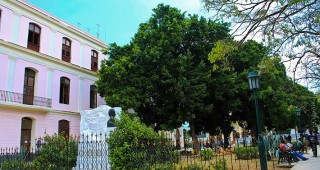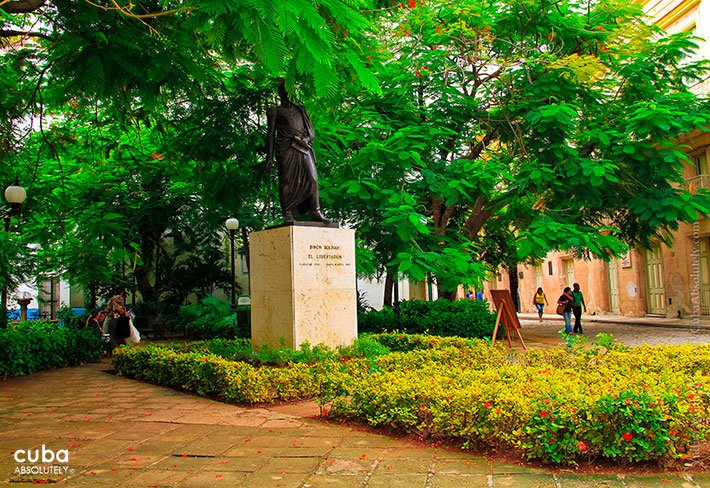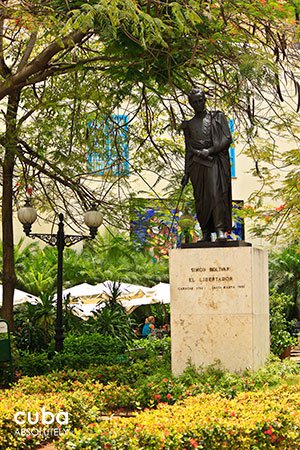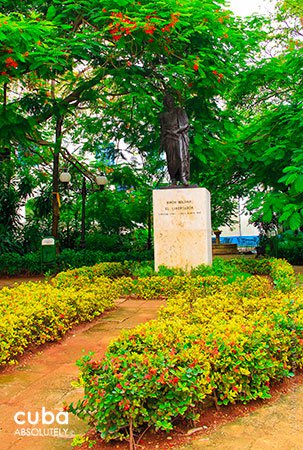North on Mercaderes, you’ll reach Parque Simón Bolívar on the corner of Calle Obrapía. In addition to a statue of the Latin American independence movement leader, the park has a ceramic mural by Venezuelan artist Carmen Montilla.

Convento y Capilla de la Inmaculada Concepción LH  4
4
This beautiful church and convent was built in Neo=\-Gothic style in 1874 and was a private girls’ school until 1961. The patio and chapel have beautiful wooden ceilings, notable stained-glass windows …
 OtherOpen: 8am-5pm Mon-Fri; 5-7pm Sat; 8-11am SunSan Lázaro #805 entre Oquendo y Lucena
OtherOpen: 8am-5pm Mon-Fri; 5-7pm Sat; 8-11am SunSan Lázaro #805 entre Oquendo y Lucena 
Plaza de la Revolución LH  4
4
The idea of building this square emerged in the 1940s, when an international contest was organized to erect a monument to honor José Martí, Cuba’s National Hero. In 1943 the project was finally approv …
 ModernAdmission: CUC 3Open: 9am-4:30pm Mon-SatPaseo y Avenida de la Independencia (Boyeros)
ModernAdmission: CUC 3Open: 9am-4:30pm Mon-SatPaseo y Avenida de la Independencia (Boyeros) 
Teatro América LH  4
4
The América Theatre is one of the most interesting architectural works in Havana. It first opened on March 29, 1941 and is part of a large building complex located on one of Central Havana’s main comm …
 Art Deco
Art Deco 
Palacio del Conde Lombillo LH  4
4
Located on the north-east corner of the Plaza de la Catedral, this mid18th-century building is unusual in having three façades: the main one on Empedrado and the other two facing Mercaderes and the sq …

Centro de Desarrollo de las Artes Visuales LH  4
4
Tucked into the northwest corner of the plaza, the relatively austere gallery occupies three levels of a partially restored 18th-century townhouse mansion. It holds temporary exhibitions of both renow …

Plaza del Cristo LH  4
4
The mid-17-century plaza takes its name from the Iglesia del Santo Cristo del Buen Viaje. It was first known as Plaza Nueva taking the name of what is now known as Plaza Vieja. For a while it was know …

Teatro Nacional de Cuba LH  4
4
Opened in 1960, and reopened in 1979 after being fully restored, this is one of Havana’s most important cultural venues. It promotes dance, drama, theater for both adults and children, music and visua …

La Terraza de Cojimar LH  4
4
Ernest Hemingway lived in Cojimar for some years and this was his favorite restaurant there, as evidenced by the many pictures of the American author here, including one with Fidel Castro. In one of t …

Edificio FOCSA LH  4
4
Considered one of the seven wonders of Cuban civil engineering, when built, the Focsa building was among the largest reinforced concrete structures in the world. Construction works took 28 months, and …
 Modern17 entre M and N
Modern17 entre M and N 
Teatro Martí LH  4
4
Elegant and simple, this Romanesque-style theater opened in 1884 as Teatro Irijoa and changed its name to Teatro Martí in 1900. Because of its location in Habana Vieja and its great acoustics, it achi …



